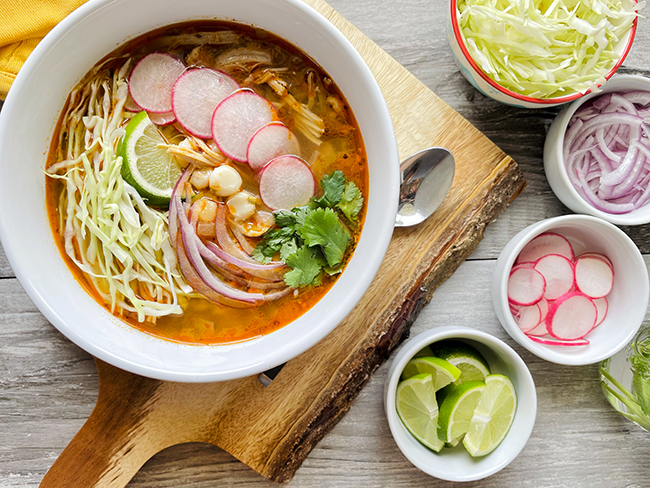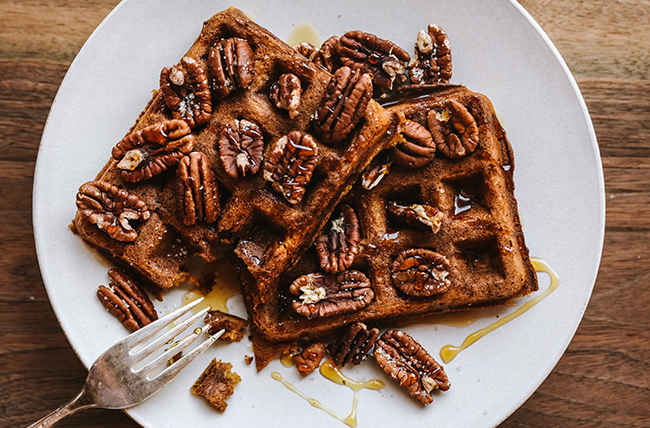Southern Greens
29 Mar 2014
Once considered “just” Southern Comfort Food, now we know the truth. They are so good for you.
By Edna Cox Rice RD, CSG, LD

Vegetables, in general, provide you with a lot of nutritional bang for your buck. If you want to improve your health, including these southern favorites – collards, kale, turnips, and cabbage – in your diet regularly may make the biggest impact on your overall health. Unfortunately produce doesn’t carry nutrition labels, but you may see benefits of specific items posted on their stand.
Green leafy vegetables are powerhouses, packed with vitamins, minerals, antioxidants, and fiber that contain numerous healthful benefits. These nutritional winners may help protect you from heart disease, diabetes, cancer, as well as offer beauty benefits for healthy, glowing skin and hair.
Greens are low in calories, high in fiber, and have a negligible fat content. Because of the high fiber content, they are digested slowly and keep you feeling fuller longer. Almost carb free, greens are considered “freebies” on most diet plans. Depending on the green, a single serving, one half to one cup, will provide only 15 – 50 calories, making them an excellent choice for any weight loss plan.
Dark leafy greens are some of the best sources of both water soluble vitamins: B and C; and fat soluble vitamins: A and K. The B vitamin, folic acid, has been shown to decrease the risk for colon cancer. Kale, collards, and spinach are the leaders in folic acid content. Vitamin C has many important functions: it boosts the immune system; fights infections; promotes healthy skin. Foods rich in vitamin C increase the absorption of iron. Greens are rich in the beta-carotene form of vitamin A which is known to maintain healthy vision, radiant skin and hair.
Recent research indicates that vitamin K may be even more important than once thought and many people do not get enough of it in their daily diets. Vitamin K regulates blood clotting; protects bones from osteoporosis; protects against inflammatory diseases like arthritis; and may help to prevent diabetes.
And there’s more. These vibrant vegies also contain a high amount of minerals like calcium, magnesium, phosphorous and iron. One cup of greens provides 20-30 percent of your daily value of calcium.
Dark leafy greens are brimming with phytonutrients including lutein and zeaxanthin which protect cells from damage and protects eyes from age-related problems – cataracts and macular degeneration, among many other effects.
Deeper colors, as in spinach, Swiss chard and broccoli, offer greater nutrient benefits than their paler relatives such as Boston lettuce, Belgian endive, and iceberg lettuce. These lettuce varieties, though not devoid of nutrition, are mostly water and last on the list of health benefits. Even so, iceberg lettuce is the most popular leafy green in the United States. Annually, Americans eat 17 pounds of iceberg lettuce per person. Try using this as a salad starter, but combine with the darker green varieties to maximize the health benefits.
So good for you Greens:
Kale: The current “it” food is popular to add to a smoothie, in salads, or baked as a chip. Just one cup provides only 33 calories and is an excellent source of Vitamins A, C, and K, folic acid, calcium, and potassium. Our bodies absorb the calcium in kale better than the calcium in spinach because of the lower oxalic acid content in kale. Oxalates bind with calcium, interfering with absorption. The heat during cooking reduces the oxalic acid content and releases more of the dietary calcium.
Curly kale, the most widely available, can be used as an alternative to cabbage in most dishes, including slaw. It’s wonderful in soups, salads, or sautéed with olive oil. The red, purple veined Red Russian variety is sweet enough to even eat raw.
Collards: This southern classic originated in the Mediterranean basin and was a favorite of the Greeks and Romans. Nutritionally, collards are similar to kale, but have a heartier, chewier texture. The typical southern cook uses ham hocks to season these greens. To lighten up on the sodium and saturated fat, try fat free chicken stock for flavor.
Turnips: A staple of southern cooking, these are best from October to February. Turnips with the tops offer two vegetables – the greens and the root. Of all the greens, turnips are the most tender variety requiring less cooking, yet still have a sharp flavor. This bitter flavor is linked to the high calcium content. Turnips, like collards, are rich in Vitamins A, C and K, iron, folic acid, calcium and potassium.
Mustard Greens: Another southern favorite, they provide beta-carotene, riboflavin, thiamin, and vitamin C. Mustards can have a sharp, peppery taste; adding lemon juice or vinegar at the end of cooking helps to decrease the spiciness.
Spinach: This versatile treasure routinely makes the top ten super foods’ list because it is loaded with vitamins A, C, folate, iron and calcium. It does contain oxalates which can combine with calcium and can be a concern for anyone who is prone to kidney stones. Cooking spinach decreases the oxalic acid content and provides more nutrition than raw. More calcium is released when it is cooked. So you benefit from adding spinach to soups and stews or stuffing lasagna and chicken with this green.
Swiss Chard: It’s a member of the beet family, and is most often identified with Mediterranean cooking such as bean soups and lasagna. The stalks come in shades of yellow, purple, orange, and red; the entire plant is edible. This veggie is a rich source of vitamins A, C, K, folic acid, and carotenoids.
Broccoli: It’s one of our more popular vegetables and is readily available in all grocery stores. Americans eat about 6 pounds a year. Broccoli is steamed, added to stir fries, pureed for soups, or used for dipping. This super food is packed with vitamins A, C, K, calcium, folate and potassium.
Cabbage: An international vegetable, it’s grown statewide in the Carolinas. It is universally available in all countries and cultures and is a staple of cooking world-wide. Varieties include Savory, used in American dishes such as soups and stews; Red Cabbage commonly used as an accompaniment with German meats; Bok Choy, a favorite for stir fries; and Napa fermented for Korean kimchi. It is a great source of cancer-fighting compounds and vitamin C.
Any fresh produce must be properly washed and cleaned before cooking. Be sure to wash greens thoroughly. Fill a sink with water and swish the greens to loosen dirt and grit from the leaves. Drain the sink and repeat the rinse until free of all dirt. Even if greens are labeled “prewashed,” be sure to rinse thoroughly. Store washed greens in a plastic bag; these should stay fresh in the fridge for 3-5 days. It helps to wrap tender greens such as spinach and Swiss chard in paper towels, before placing in a plastic bag.
Greens are relatively easy to cook. Substantial nutrition is lost when greens are boiled, fried, or over cooked. Steaming greens, lightly sautéing, roasting, or stir fry preserve more of the nutritional value. These cooking methods allow you to appreciate the natural flavors of the veggies.
Green leafy vegetables are widely available in grocery stores making it easy to incorporate them into your daily diet. Collards, kale, cabbage, turnips, and mustards are grown locally, right here in the Carolinas. So take advantage of this local fare and enjoy those foods that are [so good for you!]
Recipes
Basic Greens with Garlic and Red Pepper
[Tip: one pound of greens cooks to 1–2 cups]
One pound greens – [kale, collards, turnips, mustards, spinach are great choices for this recipe]
Olive oil
Garlic, thinly sliced
Crushed red pepper, a pinch
Lemon juice, cider vinegar, wine vinegar, or balsamic vinegar (optional)
Salt & pepper to taste
Cook greens stovetop for 5–10 minutes, drain. Press with back of spoon to release excess water.
Heat olive oil and garlic in a skillet until garlic sizzles
Add red pepper, stir and cook until garlic is tender and a light golden color, 1-2 minutes
Add greens and toss to distribute the hot oil
Splash lemon juice or vinegar and toss
[One half cup serving = 45 calories]
Kale Slaw with Peanut Dressing
2 bunches kale (2 pounds), washed well and drained; stems and center ribs removed; leaves very thinly sliced crosswise
1 yellow, red or green bell pepper, ribs and seeds removed, halved crosswise and thinly sliced lengthwise
2 carrots, peeled and thinly sliced crosswise
½ cup roasted, unsalted peanuts
½ cup neutral-tasting oil (such as canola or sunflower)
¼ cup apple-cider vinegar
2 tablespoons dark brown sugar
Coarse salt
In a large bowl, toss together kale, bell pepper, and carrots. Puree ¼ cup peanuts, oil, and vinegar with the brown sugar and 1 teaspoon salt in a blender until smooth. Coarsely chop the remaining peanuts.
Pour dressing over vegetables. Sprinkle peanuts on top and serve.
[One half cup serving = 110 calories]













